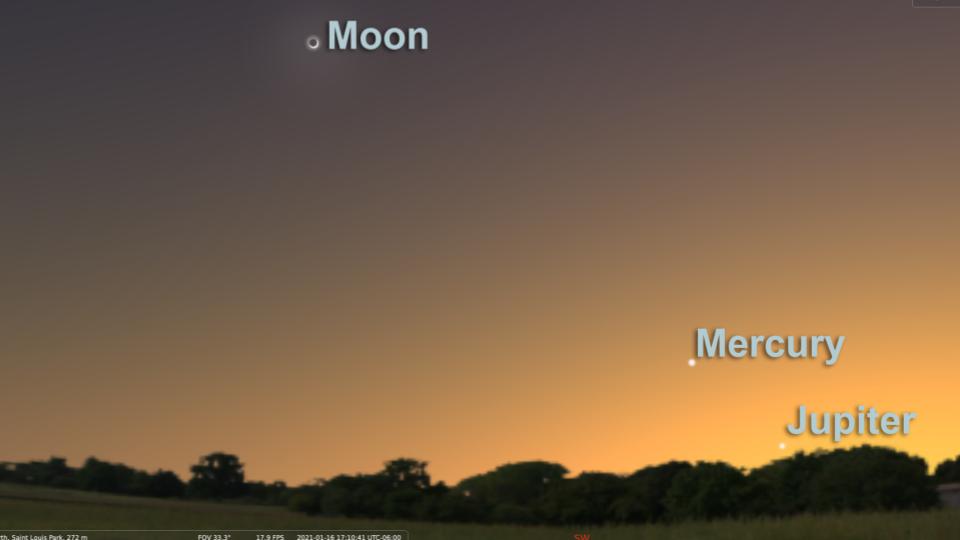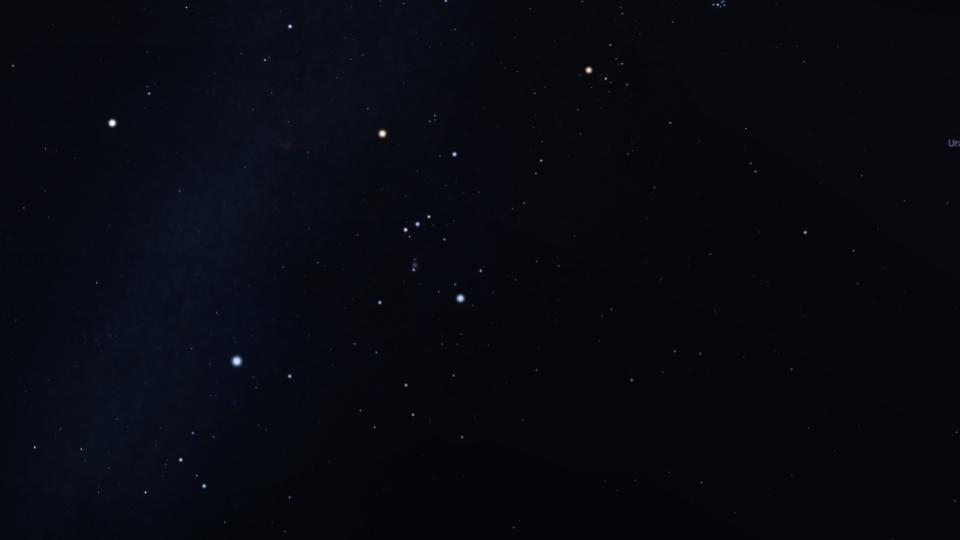
It’s now time for our weekly What’s Up feature.
Depending on where you live, your sky may or may not be dark enough to take in a lot of stars, but as long as you have a cloud-free night, the Moon should be visible. This weekend, the Moon will be a thin crescent, visible in the west after sunset. This kind of moon is often called a horned moon because as it sinks into the horizon, chasing the Sun down after sunset, the curve of the Moon faces the Earth while the tips of the crescent moon point up. Just how dramatic this appears will depend on where you are on the planet, but no matter where you are, the Moon is showing you where the Sun is: that curved edge of the crescent always points toward the Sun.
Along that line from the Moon’s curve toward the west-setting Sun, Jupiter and Mercury will be hiding in the twilight shortly after sunset. If you are down on the beach facing southwest, you may be able to see them with binoculars.
Looking south, you can also watch the great winter constellation Orion rise to stand tall around 10 pm for folks in the northern hemisphere. If you’re in the southern hemisphere, you’ll want to look north, and he’ll be standing on his head at the same time of night.

No matter how you see Orion, this is the time of year you want to look. With the Moon just a sliver, people in darker locations will be able to make out the faint glow of stars forming along Orion’s sword, and we can all, no matter how bad the light pollution, enjoy the once again bright red star Betelgeuse shining. In about 100,000 years, we expect Betelgeuse will explode, creating a supernova visible during the day and an expanding red nebula that will eventually make Orion the Hunter look like Taurus the Bull managed to injure him.
Speaking of Taurus, it also has a bright red star. Or, as Pamela insists on saying, a burnt orange Texas Longhorns colored star. This star, Aldebaran, is the eye of Taurus and currently marks the part of the sky the asteroid 16 Psyche is passing through.
If you have a 4” or larger telescope, you may be able to see this asteroid as a point of light that moves over tens of minutes. This asteroid is metal-rich, particularly in iron and nickel. Planetary scientists think it could have been the core of a small planet that either failed to completely coalesce or was broken apart by the pull of Jupiter’s gravity. Understanding Psyche’s origin could advance our understanding of our solar system’s formation, so scientists are analyzing every bit of data they can. Unfortunately, this rock doesn’t look like more than a moving speck in even the Earth’s largest scopes. To learn more, NASA will be sending a mission to Psyche. This orbiter is targeted for launch in 2023 and should arrive at this speck of light in 2026.




 Join the Crew!
Join the Crew!
 Escape Velocity Space News
Escape Velocity Space News
0 Comments